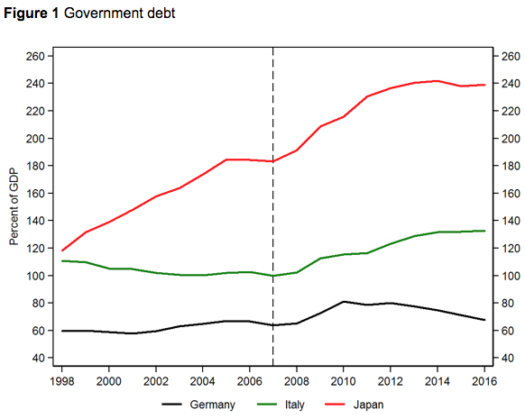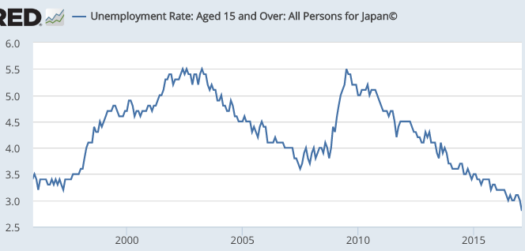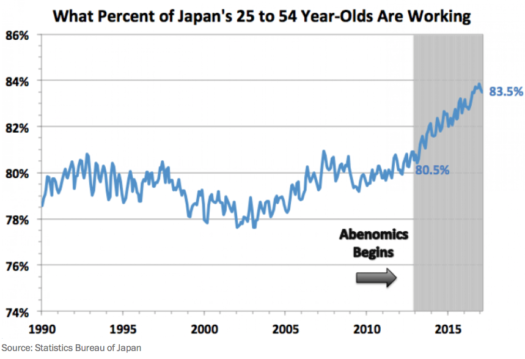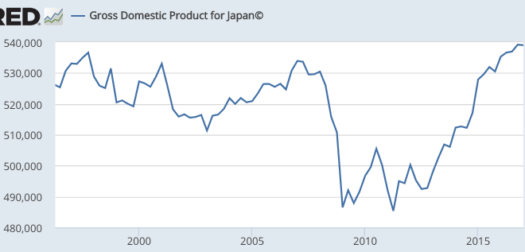Warsh on fiscal and monetary policy
Because Kevin Warsh is apparently the frontrunner for Fed chair, his record has been attracting a lot of attention. Here’s Ike Brannon of the Weekly Standard:
In 2010, in his waning days on the board, Warsh remained preoccupied with the specter of inflation despite the complete lack of evidence suggesting its incipient appearance. In an FOMC meeting late that year he argued that the Fed should consider pulling back on its quantitative easing despite the fragile nature of the economy, reasoning that if it were to do so it would prompt Congress and the White House to act with another round of expansionary fiscal policy.
Suggesting that the Fed play political chicken with Congress is, in a word, insane. The Federal Reserve has a legislative mandate to pursue both full employment and price stability in monetary policy. What Warsh suggested would have effectively set that aside and inserted the Fed into the middle of a highly charged political battle that could have harmed the economy. People who allege that Warsh’s appointment would make the Fed more political can point to this as Exhibit A.
I agree that this sort of policy would be insane, although I’m not sure that this is precisely what Warsh was proposing. I found this passage in the transcript of the November 2010 meeting, which suggests a slightly different interpretation (albeit equally “insane”):
First, my views on policy. As I said when we met by videoconference, my views are increasingly out of step with the views of most people around this table. The path that you’re leading us to, Mr. Chairman, is not my preferred path forward. I think we are removing much of the burden from those that could actually help reach these objectives, particular the growth and employment objectives, and we are putting that onus strangely on ourselves rather than letting it rest where it should lie. We are too accepting of dangerous policies from others that have been long in the making, and we should put the burden on them.
I can think, Mr. Chairman, of a tough weekend that the Europeans had, particularly your counterpart at the ECB, in the spring or summer, when we all knew that the European Central Bank, rightly or wrongly, was going to take action. But Jean-Claude Trichet did not take action until very late that Sunday night, until the fiscal authorities did their part. He thought that if on Friday night he were to say all of the things he’d be willing to do, he’d be taking the burden off the fiscal authorities. He chose to wait. I think we would be far better off waiting. If we proceed on this path, as I suspect we will, I would still encourage you to put the burden where it rightly belongs, which is on other policymakers here in Washington, and to do so in a way that is respectful of different lines of responsibility.
A few comments:
1. Warsh’s comments in the transcripts are consistently disappointing, on almost every level. Unlike other people I often disagree with (Krugman, Summers etc.) he doesn’t have a first rate mind. His reasoning process is poor and he lacks good communication skills. He has very poor judgment when interpreting data. I really don’t know what he’s trying to say here, but the reference to Trichet is interesting. Trichet was trying to encourage fiscal authorities to adopt more contractionary fiscal policies, not expansionary policies. Trichet did not want to “bail out” expansionary policies with ultra-low interest rates, and Warsh seems to be endorsing Trichet’s approach. And given Warsh’s reputation as a conservative, and the massive deficits being run by Obama back in 2010, I find it odd that Warsh would be advocating fiscal stimulus, as Brannon suggests. But again, the passage is so garbled that I could easily be wrong.
2. Warsh doesn’t seem to take the Congressional mandate seriously. He seems to believe the Fed should be free to ignore this mandate, as a way of pressuring Congress to do what a few unelected private sector bankers want it to do. To say that’s deeply disturbing is an understatement. The Fed’s only argument for policy independence is that they are selfless non-political technicians trying to achieve goals set by Congress.
It is, of course, good news that equity prices have moved up, but I’m less convinced of their durability if this achievement is mostly because of what we’re doing here in the FOMC rather than because of what’s going on in the real economy.
This is disturbing on so many levels. Start with the fact that no one could care less whether Warsh thinks the rise is equity prices was “durable”. His opinion is worthless. The fact that he thinks his opinion is worth mentioning is itself quite revealing. And of course it’s not a question of monetary policy vs. the real economy; policy impacts stocks precisely because it impacts the real economy. And of course he was totally wrong; the rise was durable. Indeed stocks could crash tomorrow, and still be far above 2010 levels.
Warsh was also totally wrong about the NAIRU:
I share the staff’s view that the NAIRU has moved up.
In researching this post I came across this very revealing passage:
CHAIRMAN BERNANKE. President Evans, did you have a question?
MR. EVANS. Well, I just wanted to ask a question and offer a reaction to something that has come up at the last several meetings. I second the proposal of characterizing what optimal policy is in some way that we could better appreciate. President Bullard was absolutely correct when he pointed out that, after a big shock, optimal policy could well lead to fairly substantial gaps, or however you want to describe this outcome. But it’s also the case that bad policy would lead to gaps like that, too, and we need to understand why the current situation should be characterized as optimal and not simply bad. [Laughter] I mean, there is just a presumption here.
MR. BULLARD. Can I just clarify?
CHAIRMAN BERNANKE. President Bullard. November 2–3, 2010 141 of 238
MR. BULLARD. I just said that merely saying that unemployment is high and inflation is very low doesn’t tell you anything one way or the other about the quality of the policy, so that’s consistent with what you’re saying. It could be that we are following completely horrible policy, but we can argue that.
MR. LACKER. My point was that we don’t want to lead people to believe that, if unemployment is ever high, it’s because we have failed and are doing bad policy. You’d agree with that, wouldn’t you? MR. EVANS. I second the proposal for clarity on all of these objectives. [Emphasis added]
This is an amazing exchange–just amazing. It perfectly demonstrates why we need the sort of accountability I’ve called for in recent posts. Evans is right, OF COURSE you’d want to be able to discriminate between bad outcomes due to bad policy, and bad outcomes due to bad luck. The Fed needs to establish a criterion by which policy actions can be judged, at least retrospectively. If the Federal Reserve cannot establish a set of agreed upon metrics by which to evaluate whether previous policy stances were too expansionary or too contractionary, then the Fed ought to be abolished, with monetary policy turned over to the Treasury.
I found the experience of reading this transcript to be very depressing, giving me even greater respect for Ben Bernanke. There were many people resisting monetary stimulus for reasons that are very hard to understand. Bernanke is very polite, but it must have been an incredibly frustrating experience for him, knowing that the economy needed more stimulus and finding so much resistance. In retrospect, it’s clear that many of his comments at the press conferences were attempts to explain the views of the committee as a whole, not necessarily his personal views. Here I’m especially thinking in terms of his warnings about costs and risks associated with QE.
Basically you had one group of people seriously trying to hit the Fed’s targets, and another group that looked for any excuse they could find to do nothing.
HT: Stephen Kirchner, Adam Ozimek, Craig Torres
Off topic: As a child I had a very severe case of hay fever (fortunately I outgrew it). So I was pleased to see Japan’s number two political party plans to address this underrated problem:
Yuriko Koike’s ‘zero policy’ pledges:
Zero nuclear power
Zero corporate cover ups
Zero corporate political donation
Zero children waiting for places in day care
Zero passive smoking
Zero packed commuter trains
Zero putting down of unwanted pets
Zero food waste
Zero violation of labour laws
Zero hay fever
Zero disabled and aged people unable to receive means of transport
Zero overhead power cables





